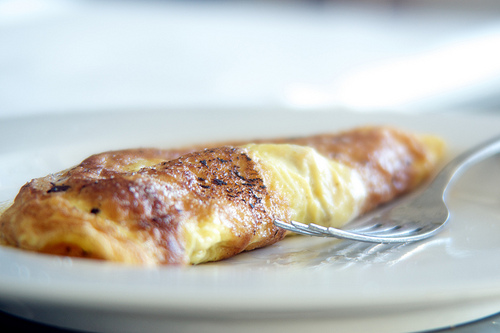Mastering the art of the omelet

Speaking of breakfast, let's talk omelets. There is nothing not to like about omelets. They are fast, requiring only about 5 minutes from start to finish. Flexible, meaning you can use just about anything as the filling - including leftovers, a bit of grated cheese, pre-made salsa, or anything you like.
How many eggs should I use in an omelet?
Three is a good start if you're serving the omelet as a hearty main course. If you're not as hungry, or if you will be serving it with a side dish, then start with two eggs.
Do I need to use an omelet pan? I don't have one!
You don't need an omelet pan, but I find they are handy for all forms of cooking. An omelet pan has gently sloped sides which make it easier to flip the omelet, but they are also easier to cook all forms of food.
Don't sweat it, though. The important thing is that you fully pre-heat the pan, and either use a non-stick pan, or oil the pan so that the eggs won't stick. As long as you have a pan that's at least 6" in diameter, you'll be fine.
OH GOD FLIPPING THE OMELET STRESS.
Don't stress! It is a little-known fact that omelets do not need to be flipped.
The secret to making a good omelet is to stir in the eggs in the first 30 seconds of cooking. This ensures that the eggs cook evenly, which means you don't have to flip it at all, just fold it in half over the filling, cook it a little bit longer, then slip it onto the plate. Watch Jamie Oliver demonstrate this technique.
What do I put in an omelet?
Anything you like! Some of my favorite fillings include: chopped tomatoes, pre-made salsa, sautéed spinach, sautéed mushrooms, and of course, cooked bacon.
Image courtesy Flickr/nathanmac87

1 comments